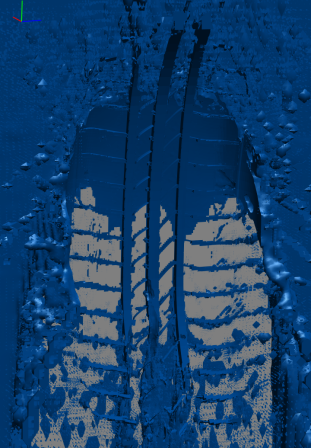Fluid-structure interaction for tire hydroplaning physics

Tire hydroplaning is one of the most challenging fluid-structure interaction (FSI) applications due to a large number of complex constraints. To name only a few: large structural deformations taking place near the contact patch region, a complex geometry of the tire tread and the nonlinear nature of the materials at stake. In the case of tire/water coupling, rubber and water are both incompressible and have very similar densities, which leads to inherent numerical instabilities. The (wet and dry) structural contact occurring at the so-called triple region where the tire meets the road and the water adds additional complexity to the present application.
The current research aims at developing a coupling interface specifically dedicated to tackle the very demanding problem of tire hydroplaning. Selected coupling techniques are implemented and tested for robustness, accuracy but also efficiency. The project being initiated in collaboration with a tire manufacturer, the solution is expected to fit in an industrial framework and is therefore required to work in a very efficient way (e.g. parallelization) for commercialized tire designs.
The expected outcomes include a better understanding of the underlying physics in tire/wet road interaction, which should provide keys for improving the performance of tires under wet conditions and, in turn, enhance driving safety.
This project is based on a collaboration with the tire manufacturer Goodyear S.A., with funding for a PhD position provided by the Fonds National de la Recherche in Luxembourg.